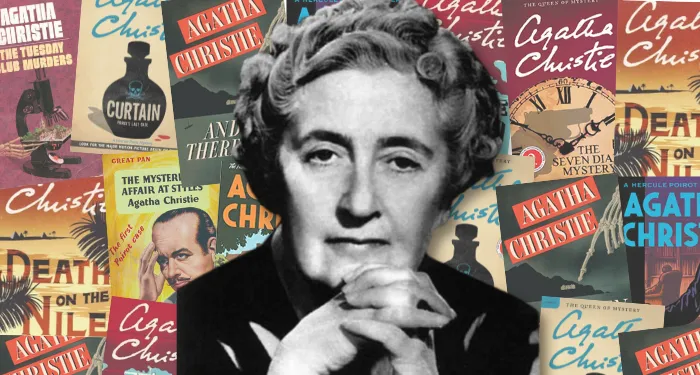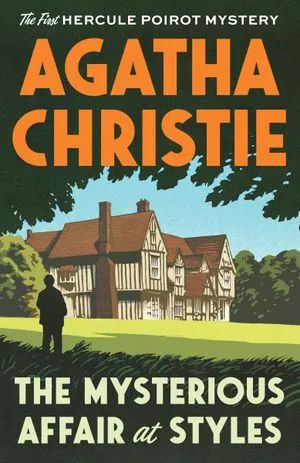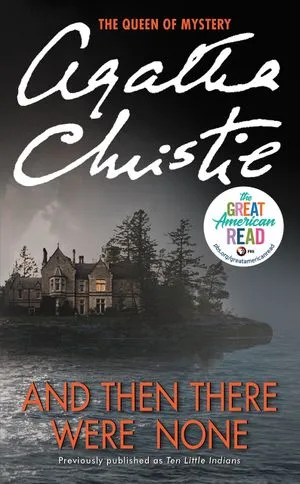
Who Was Agatha Christie?
The Queen of Crime, the creator of Hercule Poirot and Miss Jane Marple, the best-selling novelist of all time — even people who don’t read detective novels know the name Agatha Christie. In her long and prolific career, Christie wrote 66 novels and 14 short story collections, as well as several plays, one of which, The Mousetrap, is the longest-running play in history. I’ve loved Agatha Christie’s work ever since I watched my first episode of Poirot starring David Suchet (one of the best castings in literary adaptation history), and spent lockdown rereading my favourite Christie mysteries. But who was Agatha Christie?
Who was Agatha Christie?
Agatha Christie’s work was hugely influential, not only on the detective genre, but on broader popular culture; she’s been parodied in everything from The Simpsons to Muppets Tonight. Christie popularised the country house mystery, and the trope of gathering all the suspects together in one place for the denouement is strongly associated with Christie’s work. In addition to many Christie-inspired spoofs and pastiches, from Murder by Death to Knives Out, Agatha Christie’s work has also influenced multiple serious detective stories. Robin Stevens, author of the Murder Most Unladylike series, has spoken about Christie as one of her main inspirations; Stuart Turton’s The 7½ Deaths of Evelyn Hardcastle is a Christie mystery with a time loop; and books like The Hunting Party by Lucy Foley draw from Christie, with a country-house setting and a group of friends being picked off one by one.
Christie’s real life was often as fascinating and unexpected as her stories. Like many of her characters, Agatha Christie travelled the world, visited archaeological sites, and worked in the medical field in both the First and Second World Wars, a background which came into play in her writing. She also had a complex and, at some points, heartbreaking romantic life, which at one point led to a major mystery that still surrounds this beloved literary figure.
Backstory
Agatha Christie was born in 1890 to a well-off family, and was a voracious reader from a young age, after teaching herself to read aged five. She began writing short stories at the age of 18, and, in her early 20s, travelled to Egypt with her mother. During her time in Egypt, Agatha met her first husband, Archie Christie, whom she married in 1914. The couple were soon separated by the First World War — Archie fought in France, while Agatha worked as a nurse in the Voluntary Aid Detachment in Torquay, Devon. Here, Agatha met several Belgian refugees who inspired her first detective creation, Hercule Poirot. (Like Arthur Conan Doyle, Christie became quite annoyed with her most famous creation. Ariadne Oliver, her self-insert character, was her way of expressing this irritation; crime writer Mrs Oliver writes stories about a fussy Finnish detective Sven Hjerson, whose idiosyncrasies that she established in earlier stories make him very difficult to write).

The first Poirot novel, The Mysterious Affair at Styles, was written in 1916, but Christie didn’t find a publisher until 1920. The book was well-received, and had the unusual honour for a fiction novel of being reviewed in the Pharmaceutical Journal, because of the accuracy of Christie’s descriptions of the use of poison — unsurprising, as Christie’s work for the Voluntary Aid Detachment included working in the hospital’s dispensary. Christie continued this interest in medication and poisons throughout her life, spending the Second World War working in the pharmacy at University College Hospital, London.
Behind Agatha Christie’s Disappearance
While Christie’s marriage was initially happy, disaster struck in 1926, when Archie Christie informed her that he had met someone else and asked for a divorce. Christie left their home on 3 December, and her car was found the next day, with some clothes and a driving licence left inside.
By this point in her life, Christie was a popular and famous writer, and her disappearance soon became a huge news story. A large team of police officers and volunteers searched for her, and a newspaper offered a large reward for any information on what could have happened to the beloved author. It was initially feared that Christie had died by suicide; however, ten days after she disappeared, she was found at a hotel in Harrogate, Yorkshire, nearly 200 miles from her home.
Christie never discussed what happened during the ten days that she was missing, and theories abound; some believe that she experienced a breakdown that led to a total loss of memory, while others have suggested that she staged the disappearance in order to embarrass her soon-to-be-ex-husband. The disappearance has been the subject of several fiction stories, including The Christie Affair by Nina de Gramont, and an episode of Doctor Who, “The Unicorn and the Wasp”.
While Christie’s first marriage ended in heartbreak, her romantic life wasn’t over. On one of the archaeological expeditions that she loved to attend, Christie met her second husband, Max Mallowan. The two married in 1930, and their relationship lasted until Christie’s death in 1976. She left behind her only child, her daughter Rosalind, and a legacy in the form of the Agatha Christie Trust for Children.
Literary Successes
While Christie’s literary career debuted with The Mysterious Affair at Styles, this is far from her best-known work. She cemented her reputation as a gifted detective novelist with another Poirot story, The Murder of Roger Ackroyd, and a later adventure of the Belgian detective, Murder on the Orient Express, has gone down in history as one of the best-known crime stories ever written; even people who haven’t read the book are likely to know both the tale and the twist.

In addition to Poirot, Miss Marple, and Tommy and Tuppence, Christie wrote several standalone stories. One of these, And Then There Were None (renamed because its original title included a horrific racist slur), tells the story of ten strangers who are lured to an island and then picked off one by one. The group discover along the way that they have all got away with murder, and are being punished for their past sins. And Then There Were None is one of the strongest examples of Christie’s legacy; it is the world’s best-selling mystery, over 80 years after its first publication in 1940, and has sold over 100 million copies worldwide. Its popularity is understandable; while I usually prefer reading Poirot and Miss Marple, And Then There Were None has a creeping, terrifying atmosphere and an immensely satisfying plot that keeps you on edge to the last page.
Christie received acclaim and recognition for her work both in her lifetime and after her death. She was the first winner of the Mystery Writers of America’s Grand Master Award, in 1955, and was voted the best crime writer of all time by the Crime Writers’ Association in 2013. Her books have been adapted for stage and screen from the 1920s onwards, and several of these adaptations, such as the Poirot series starring David Suchet, have been award-winning productions in their own right.
While she is best-known for her crime novels and short stories, Christie also wrote in other genres. She wrote six literary novels under the pseudonym Mary Westmacott, and some nonfiction works about her time on an archaeological dig and her travels around the world. She even tried her hand at horror; I remember being quite creeped out by a haunted doll story that appears in one of her short story collections.
Agatha Christie Trivia
Christie’s knowledge of poisons and medicine as a result of her pharmaceutical work is well-known, and particularly notable for its accuracy. Indeed, Agatha Christie helped solve a real-life mystery after her death; in 1977, a case of thallium poisoning was identified when one of the people working on it recognised the symptoms from a Christie novel.
While Agatha Christie is known for her love of travel and archaeology, she also had some more unexpected hobbies. In 1922, she tried surfing for the first time, and grew to love the sport. She remained a keen surfer for much of her life, as well as a devoted swimmer.
In 1941, Christie almost fell afoul of MI5, Britain’s intelligence service. She’d named a character in her Tommy and Tuppence book N or M? Major Bletchley, because she’d been stuck near the town of Bletchley on a train journey and named the unpleasant character after the place in a fit of pique; however, MI5 investigated her because they feared that she had somehow discovered the truth about Britain’s wartime codebreaking centre, based at the famous Bletchley Park.
Agatha Christie isn’t the only writer to have had a long legacy and a fascinating life; if you want to know more about one of the world’s most influential sci-fi authors, try Who Was Ursula K LeGuin? For a deep dive into Christie’s beloved old lady detective, read How I Learned to Stop Being Sexist and Love Miss Marple. You might also be interested in Why is Agatha Christie the Best-Selling Author of All Time?











